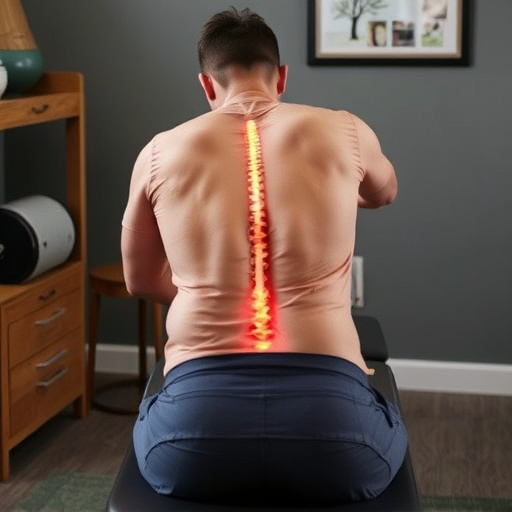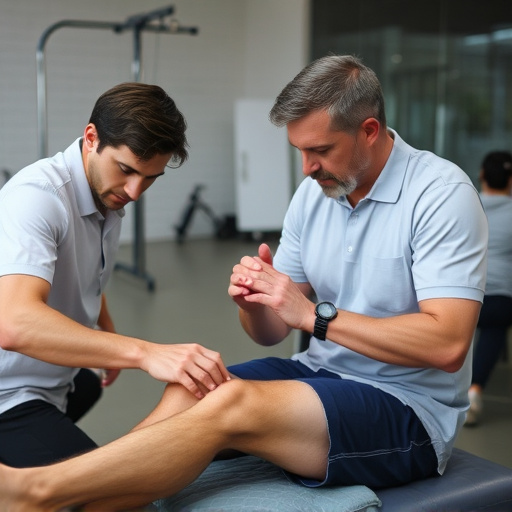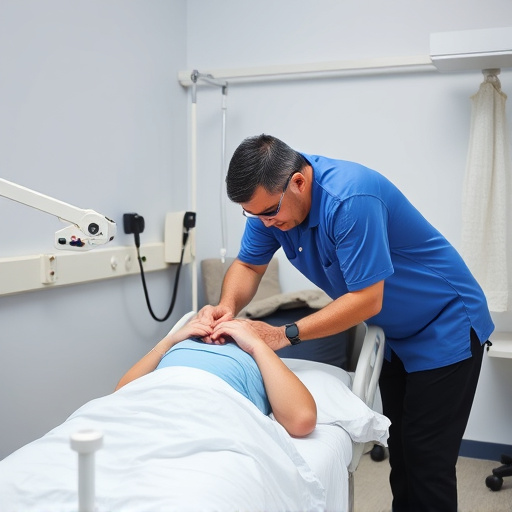Tracking pain levels daily through a journal is essential for measuring progress in shockwave plantar fasciitis treatment. Regular physical therapy assessments, including techniques like ultrasound and manual therapy, adjust care plans based on individual needs. Increased foot flexibility and reduced stiffness indicate success, enabling patients to stretch without pain. Chiropractic adjustments address structural issues, improving mobility and range of motion for athletes and those recovering from sports injuries.
“Uncover the surprising signs of progress in your journey towards overcoming Shockwave Plantar Fasciitis. This condition, known for its debilitating pain, can be effectively treated using targeted shockwave therapy. As you delve into this article, explore three key indicators that will surprise you: measuring pain reduction, tracking physical therapy advancements, and observing increased foot flexibility. These metrics provide a clear path to recovery, offering hope and guidance during your healing process.”
- Measuring Improvement in Pain Levels
- Tracking Progress Through Physical Therapy
- Observing Changes in Foot Flexibility and Mobility
Measuring Improvement in Pain Levels

When undergoing shockwave plantar fasciitis treatment, tracking your pain levels is a crucial metric to gauge progress and effectiveness. Initially, patients often experience a decrease in pain immediately after each session, but this is temporary. To truly measure improvement, consistent daily assessments are necessary. Keeping a pain journal can help document the intensity and frequency of pain over time, allowing for a clear visualization of the treatment’s impact.
As symptoms subside, comparing initial pain levels to those recorded during subsequent sessions reveals the true sign of progress. The goal is to observe a gradual decline in pain severity, indicating that shockwave therapy is successfully addressing the underlying issues. This methodical approach ensures that both patients and healthcare providers can accurately assess whether the treatment is working and make any necessary adjustments to the care plan, including incorporating therapeutic exercises or exploring alternative relief methods like sciatica relief techniques.
Tracking Progress Through Physical Therapy
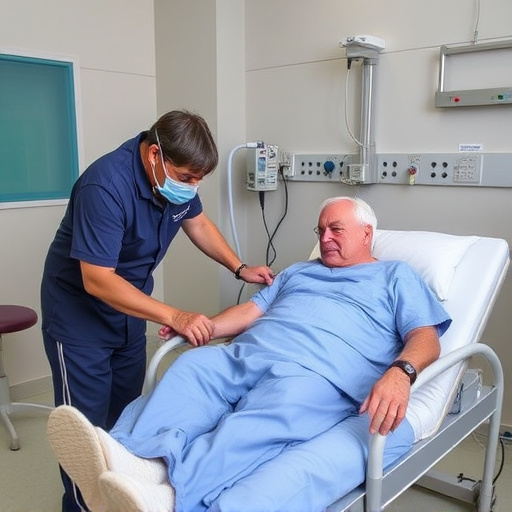
Tracking progress through physical therapy is a crucial component of effectively managing shockwave plantar fasciitis. Regular assessments by your healthcare provider allow for adjustments in treatment plans, ensuring that each session targets specific areas of discomfort and improves mobility. By combining techniques such as ultrasound, electric stimulation, and manual therapy alongside shockwave treatments, patients can expect to see gradual reductions in inflammation and pain levels. This collaborative approach not only facilitates faster recovery but also enhances the overall effectiveness of chronic pain relief strategies.
Additionally, physical therapists often incorporate exercises tailored to strengthen the plantar fascia and surrounding muscles, which is particularly beneficial for athletes or individuals recovering from sports injuries. These exercises promote better alignment and balance, reducing the risk of future flare-ups. The integration of chiropractic treatment methods can further optimize recovery by addressing any underlying structural issues contributing to the condition. As a result, patients not only experience relief from symptoms but also gain improved long-term mobility and stability.
Observing Changes in Foot Flexibility and Mobility
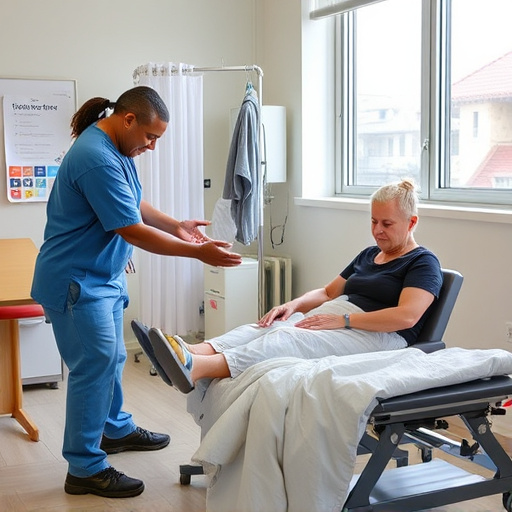
When undergoing shockwave plantar fasciitis treatment, observing changes in foot flexibility and mobility is a significant indicator of progress. This non-invasive therapy aims to stimulate healing in the affected area by delivering low-energy sound waves to the plantar fascia. As a result, you may notice an increase in range of motion and a decrease in stiffness. Patients often report being able to stretch their feet further without experiencing the acute pain associated with the condition.
The improvement in foot flexibility is a direct reflection of the therapy’s effectiveness in promoting tissue regeneration and reducing inflammation. Physical therapy sessions can also contribute to mobility improvement, targeting specific exercises that strengthen the muscles surrounding the plantar fascia and arch of the foot. Additionally, a spinal adjustment by a qualified chiropractor might be recommended as part of a comprehensive treatment plan, further enhancing overall foot health and mobility.
In concluding, the effectiveness of shockwave plantar fasciitis treatment can be gauged through several key indicators. Measuring a decrease in pain levels over time is a clear sign that the therapy is working. Additionally, tracking progress through physical therapy sessions and observing improvements in foot flexibility and mobility further validate the treatment’s success. These combined metrics provide a comprehensive view of a patient’s recovery, ensuring that shockwave plantar fasciitis treatment is indeed delivering the promised relief.








